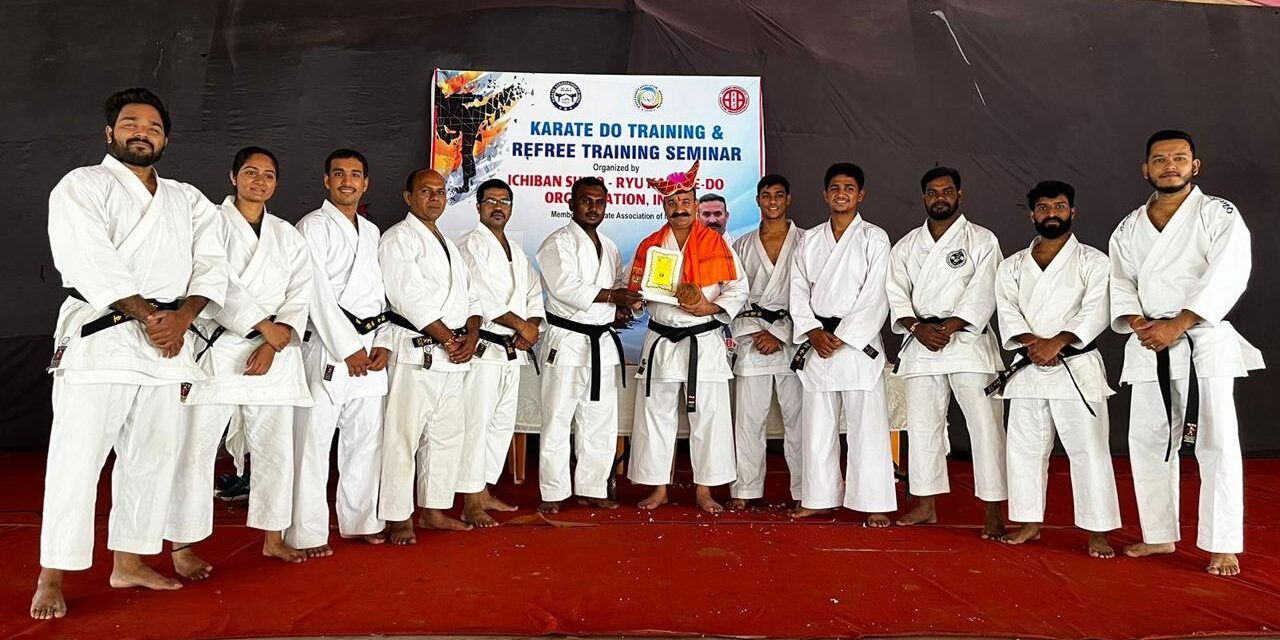Know More
About Us
karate coaching
Our Stroy

Shihan. Ashok Vetal (Founder)
4th Dan Blackbelt , a privilege he has earned after 18 years of training in Karate. He is the Founder & President of Ichiban Shito Ryu Karate Do Organization India . He is National Accredited Coach for Kata & Kumite as well he holds National license for Kata & Kumite Refree.
-
More than 150 branches of Ichiban Shito Ryu Karate Do Organization India in Pune
-
Ichiban Shito Ryu Karate Do Organization India Produced players of national and international standards.
-
Best achievement of Ichiban Shito Ryu Karate Do Organization India students in school competitions.
Have a Look at Our
Karate Story
Karate history can be traced back some 1400 years, to Daruma, founder of Zen Buddhism in Western India . Daruma is said to have introduced Buddhism into China , incorporating spiritual and physical teaching methods that were so demanding that many of his disciples would drop in exhaustion.

Kenwa Mabuni
( Mabuni Kenwa, 14 November 1889 – 23 May 1952)
one of the first karateka to teach karate in mainland Japan and is credited as developing the style known as Shitō-ryū. Originally, he chose the name Hanko-ryu, literally “half-hard style”, to imply that the style used both hard and soft techniques. Finally, Mabuni chose Shito-ryu, the first characters of the names Itosu and Higaonna, his two primary teachers.
History of Shito Ryu
In an effort to popularise karate in mainland Japan, Mabuni made several trips to Tokyo in 1917 and 1928. Although much that was known as ‘Te’ (Hand) or Karate had been passed down through many generations with jealous secrecy, it was his view that it should be taught to anyone who sought knowledge with honesty and integrity. In fact, many masters of his generation held similar views on the future of Karate: Gichin Funakoshi(founder of Shotokan,another contemporary, had moved to Tokyo in the 1920s to promote their art on the mainland as well. During this period, Mabuni also taught many other prominent martial artists, such as Otsuka Hironori (founder of Wadō-ryū) and Yasuhiro Konishi(founder of Shindō jinen-ryū). Both men were students of Funakoshi.
By 1929, Mabuni had moved to Osaka on the mainland, to become a full-time karate instructor of a style he originally called Hanko-ryū, or ‘half-hard style’. In an effort to gain acceptance in the Japanese Butokukai, the governing body for all officially recognised martial arts in that country, he and his contemporaries decided to call their art ‘Karate’ or ‘Empty Hand’, rather than ‘Chinese Hand’, perhaps to make it sound more Japanese. Around the same time, perhaps when first introducing his style to the Butokukai, is when it’s believed the name of the style changed to Shitō-ryū, in honour of its main influences. Mabuni derived the name for his new style of Shitō-ryū from the on’yomireadings of the first Kanji character in their names, “Shi” for Ito(糸)su and “Tō” for Higashi(東)onna. With the support of Sakagami Ryusho (1915-1993), he opened a number of Shitō-ryū dojo in the Osaka area, including Kansai University and the Japan Karate-dō Kai dōjō. To this day, the largest contingent of Shitō-ryū practitioners in Japan is centred in the Osaka area. However, Mabuni’s contemporary Shinpan Shiromaremained in Shuri, Okinawa, and established Okinawan Shito-ryu.
Meet our team
Venenatis nibh vel arcu dui et dictum tristique dis tortor eget quis nullam congue massa lorem ante dictum eu vel commodo quis nunc

